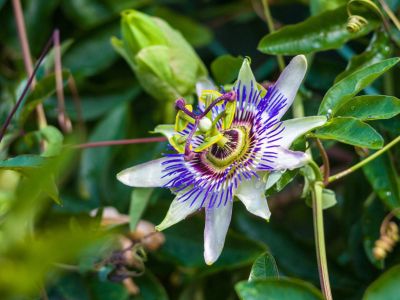Getting Passionflower to Bloom
“How do you get a passionflower to bloom?” is a question commonly asked on garden forums across the web and shouted in earnest over back fences everywhere. It would stand to reason that if your passionflower vine was growing wildly out of control, it should be setting blooms, but this isn’t always the case. Passion flowers require very exacting conditions to excite the urge to bloom. A passionflower not blooming is almost always due to something in the environment, so put on your detective pants and carefully inspect your plant’s living quarters while keeping the following in mind: Age: Passionflowers don’t always bloom right away. Many species need several years to establish a solid root system before they begin to set blooms. Blooms are lovely, but they soon lead to resource-intensive fruits– your plant may need to build reserves before it’s ready for fruiting. Fertilizer: Passionflowers, at their very core, are still more wild than domesticated. They don’t need to be pampered and they really would prefer that you didn’t bother. Nitrogen feedings, especially, may result in fast, spindly vegetative growth at the expense of flowers. The addition of phosphorus, like bone meal, can usually help offset this. Like many other native plants, passionflower thrives on neglect. Lighting: Fruiting plants need as much sun as they can get, and passionflower is no exception. Even if you never intend to harvest them, your passionflower is hard-wired to turn those flowers you seek into fruit, and this means being able to create lots of food with the help of the sun. Check your passionflower during the day to make sure it gets at least eight hours of direct sunlight; otherwise, it may never bloom or bloom only sparsely when it tries. Watering: Passion flowers are tough enough to handle drought conditions but grow best when planted in a well-draining location and watered frequently. The soil should be moist, not wet. Water helps all plants transport raw materials to leaves, where they’re turned into food for the plant. Without adequate water, these systems may be disrupted.
